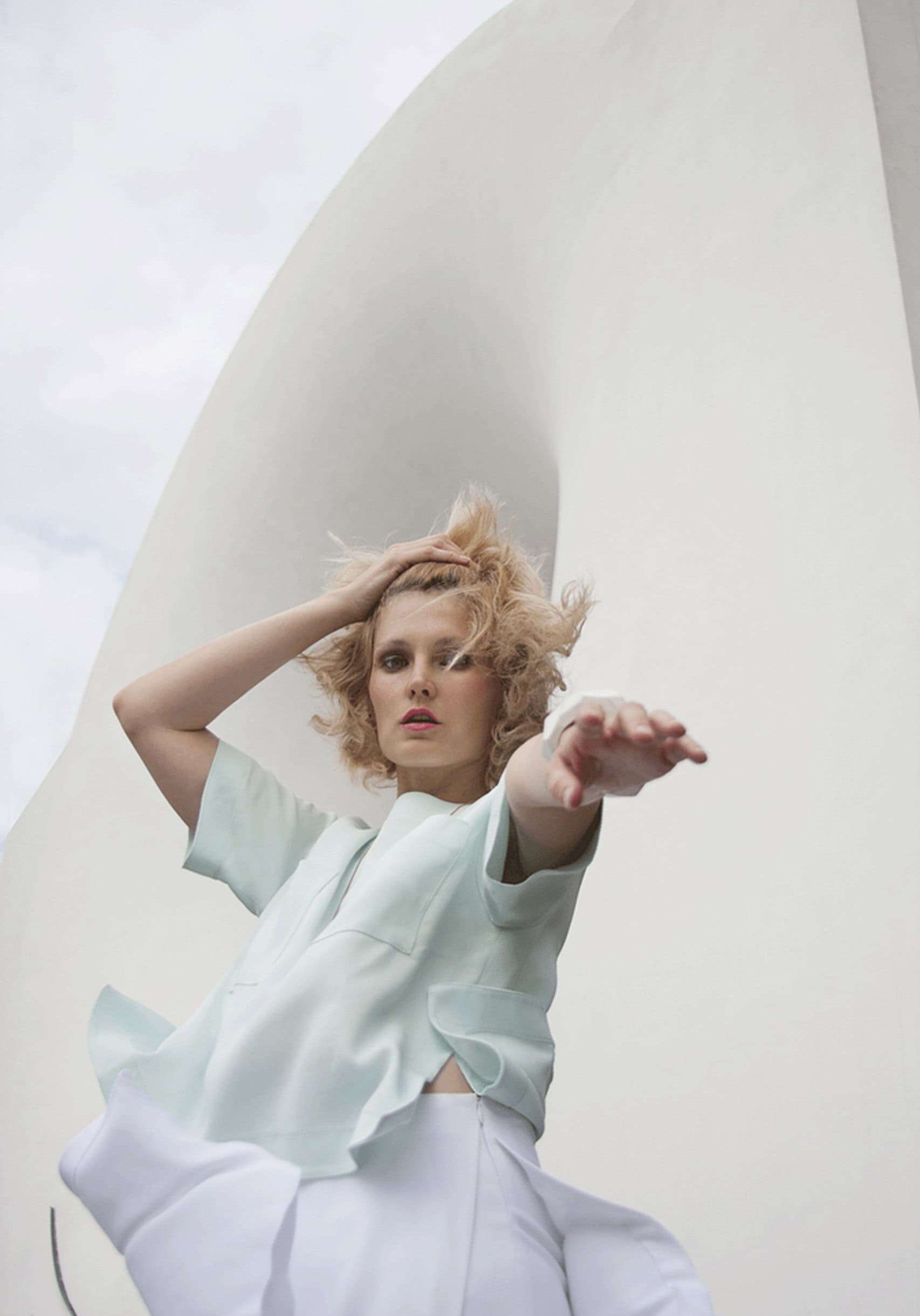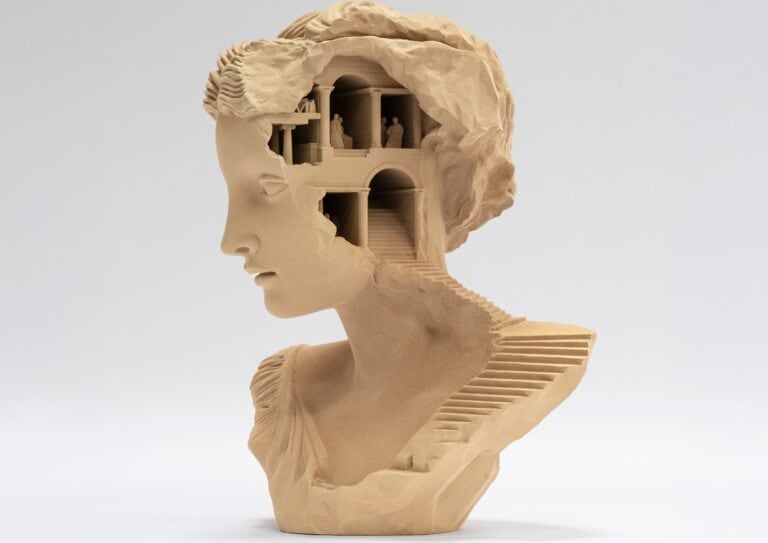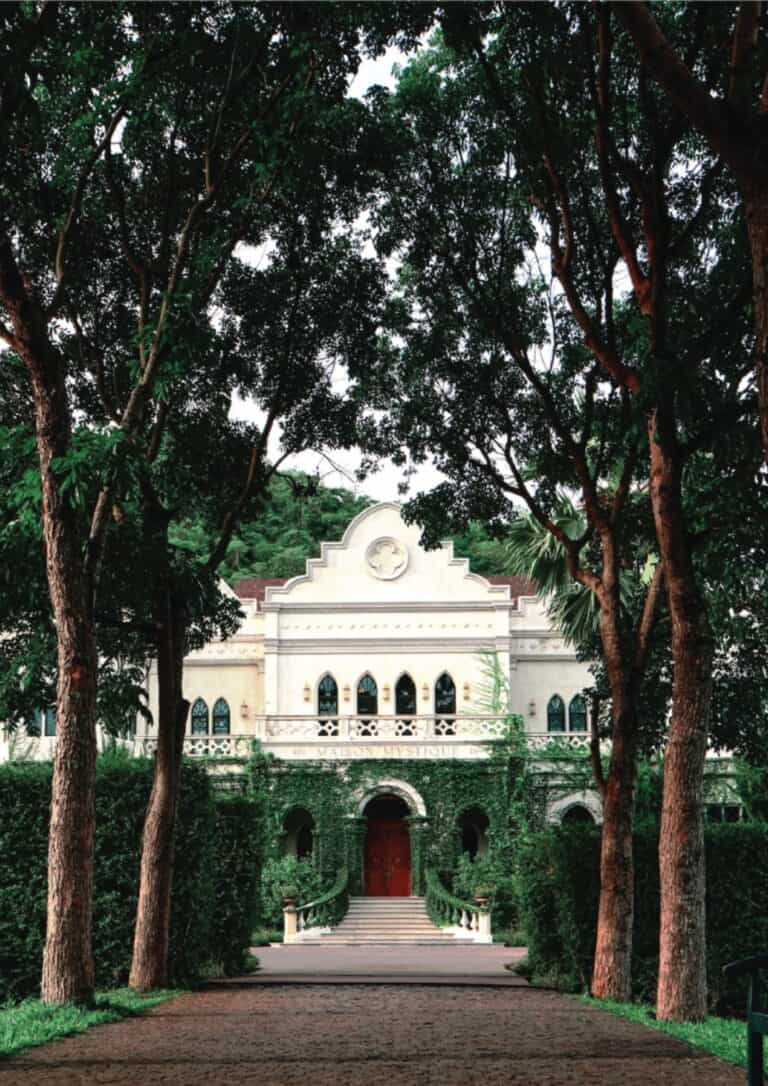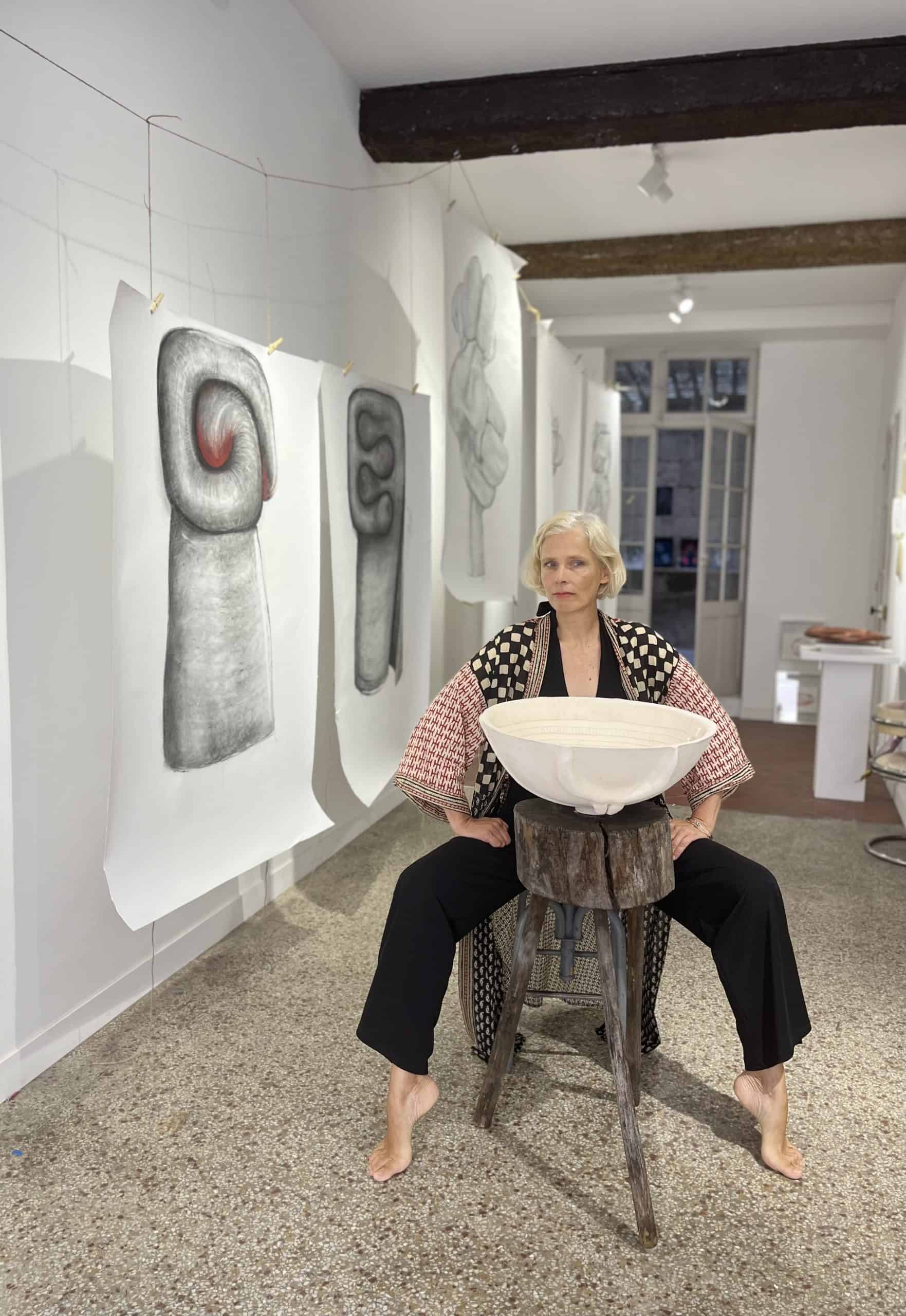
UTA TIGGESMEIER SCULPTING MYTH & METAMORPHOSIS
Mia Macfarlane
Uta Tiggesmeier’s hands move between worlds. “My work begins where language fails, in the space of gesture, memory, and matter.” A German sculptor and draftswoman working between Arles and London, her art calls back to ancestral knowledge. Meanwhile, it grapples with the tensions of the present. She moves between body, earth, and myth. Thereby, she reclaims the space between the seen and unseen.
Whether working with clay, graphite, bone, or performance, Tiggesmeier moves intuitively between mediums. Consequently, her sculptures often evoke totemic presences, part-body and part-organic, grounded in myth yet unmistakably contemporary. Furthermore, her large-scale drawings explore similar themes, tracing a line between the sensual and the spiritual.
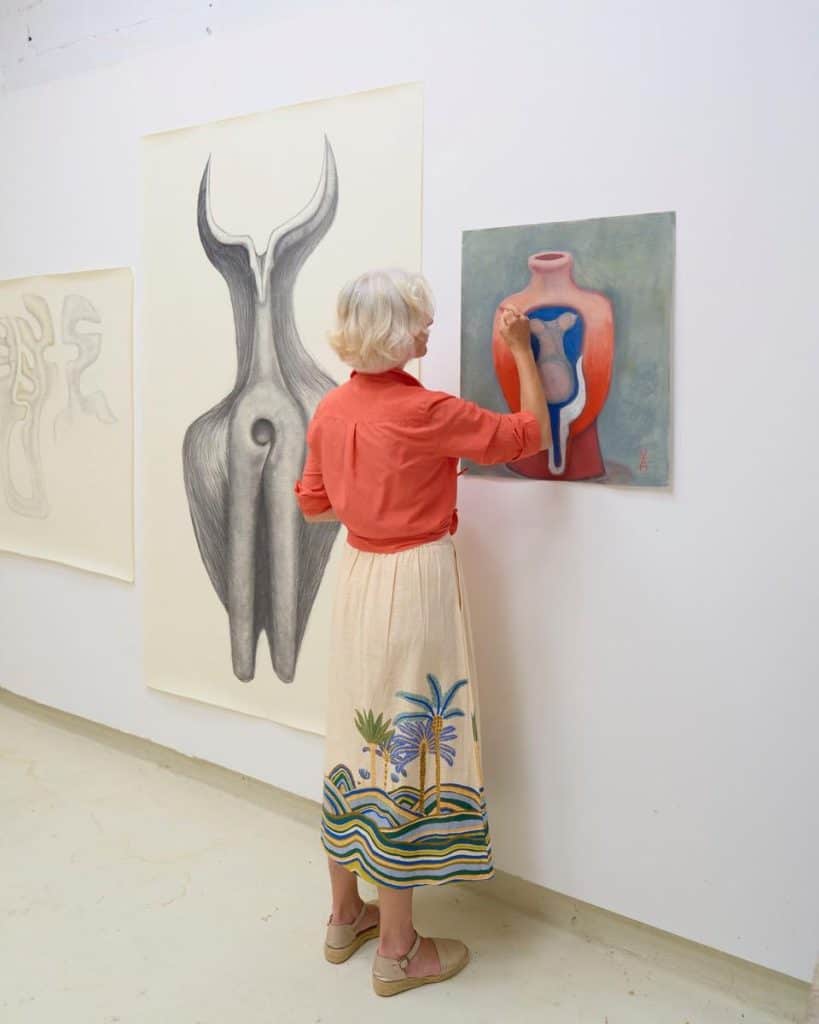
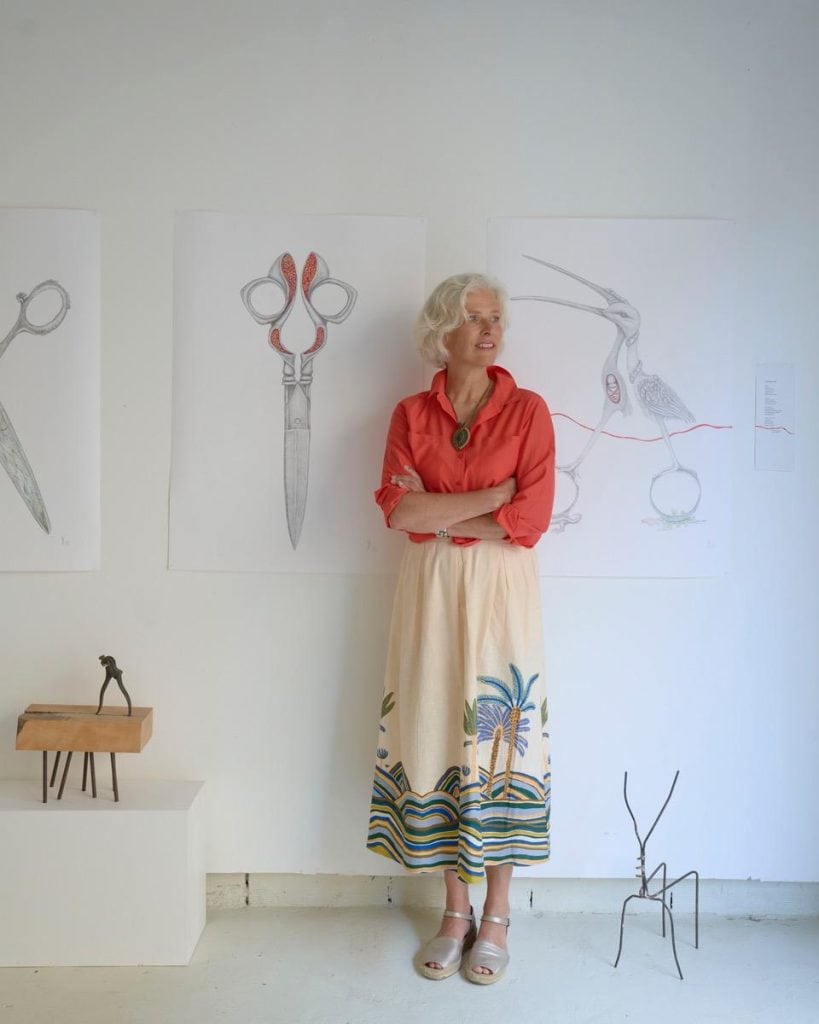
Uta Tiggesmeier drawing during her exhibition “Palímpsêstos” 12 April to 11 Mai 2025. As part of “Festival du dessin Arles” © Anna Leroy.
Roots and Influence
Her practice is raw and precise. It is rooted in ecofeminist research into the role of women in ancient mythologies and matriarchal cultures. These stories have been progressively erased from history. Therefore, Tiggesmeier examines the rupture between the feminine and nature imposed by patriarchal systems. Through her work, she imagines new forms of reconciliation and regeneration.
“I’m not interested in creating fixed meanings,” she explains. “I work to uncover what has been buried; culturally, historically, emotionally and give it a form others can feel and respond to.”
This approach runs through every part of her practice, from sculpture and drawing to performance and site-specific installations. Moreover, whether she works with iron, glass, clay, or found objects, Tiggesmeier treats material as a carrier of memory and energy. Her creative process stays physical and intuitive. These forms surface gradually over time.
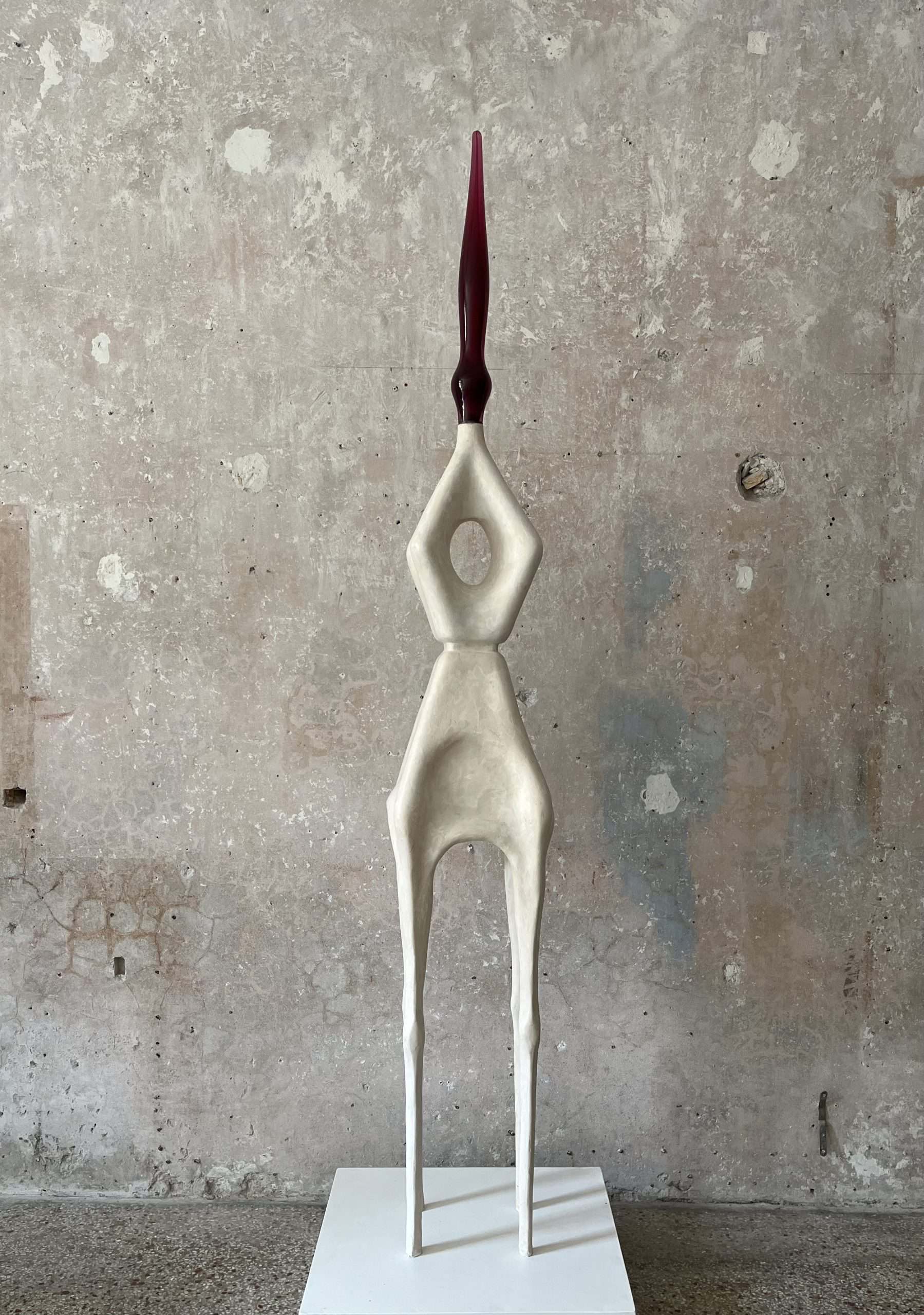
Raised in an intergenerational farming family in Westphalia, Tiggesmeier developed an early awareness of natural cycles: growth, decay, and transformation.
“My father used to say, life lives from death,” she recalls. “That stayed with me. The land shaped my inner world — not as nostalgia, but as structure.”
Although she draws inspiration from biography, Tiggesmeier resists labels that reduce her work to personal identity. Instead, she sees herself as part of a lineage of makers, storytellers, and listeners.
“I’m deeply influenced by comparative mythologies and prehistoric matriarchal cultures. It’s not about idealising the past. It’s about what was erased — and what needs rebalancing.”
The Geometry of Sacredness
Her triptych “The Geometry of Sacredness”, three tall ceramic figures in red, white, and black clearly embodies this inquiry. Specifically, these sculptures, inspired by the Bethen, pre-Christian goddesses later absorbed into Catholicism, explore cycles of life, fertility, and decline. Moreover, each figure feels architectural and grounded, yet open. A vessel for ancestral memory and feminine power.
“These are not characters. They’re presences,” she says. “They hold grief, sexuality, and strength. They are still, but they carry movement like tectonic plates.”
Moreover, Tiggesmeier has increasingly explored public engagement alongside her studio practice. For example, her participatory installation Emotion Composter invites visitors to bury their face into a mound of soil and release an emotion.
“It’s a simple gesture, but incredibly intimate. Most people come away surprised by the smell, the sensation, the silence. I had forgotten what soil actually smells like, they say”
Additionally, drawing remains a central part of her process. Monumental graphite pieces often precede or accompany her sculptures.
“It’s not a sketch it’s an act in itself. Drawing allows me to enter a meditative space. The lines build over time, like sediment or skin.”
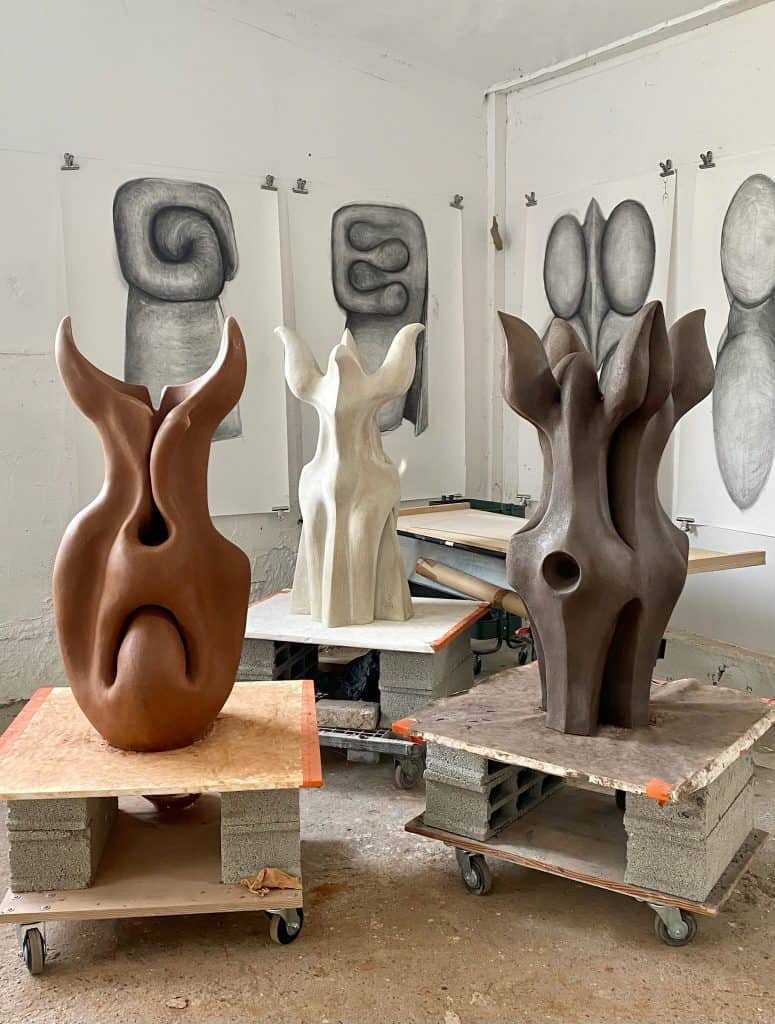
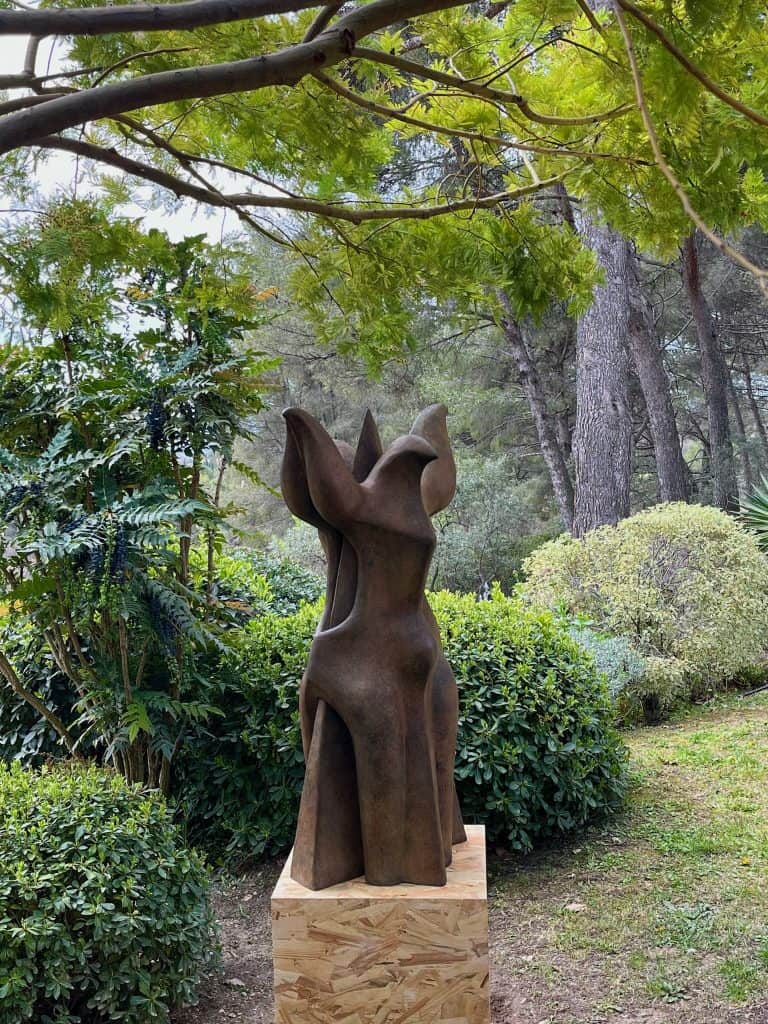
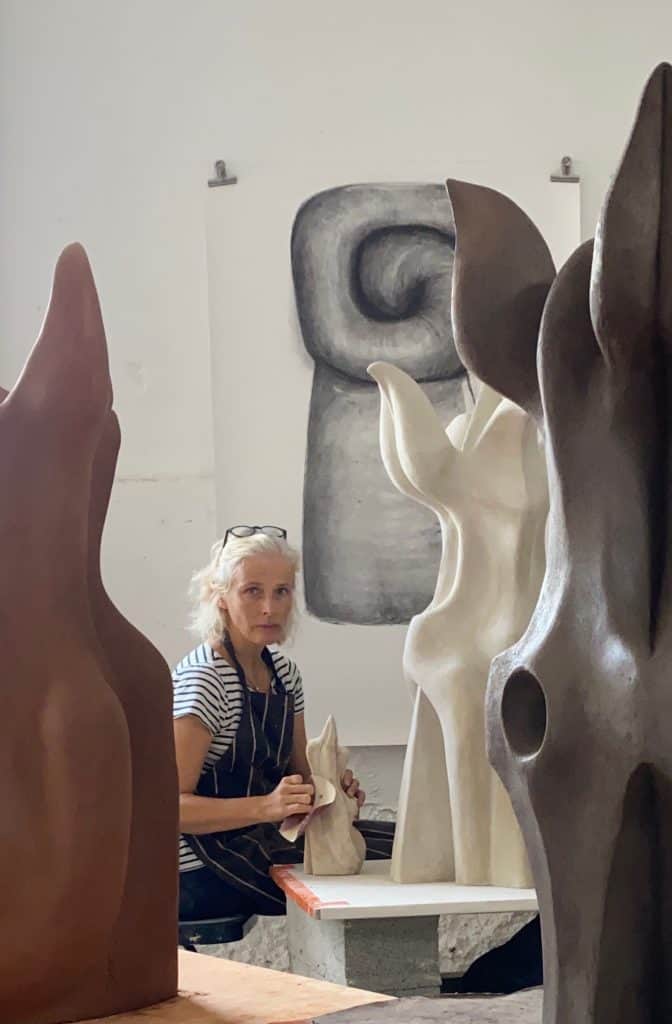
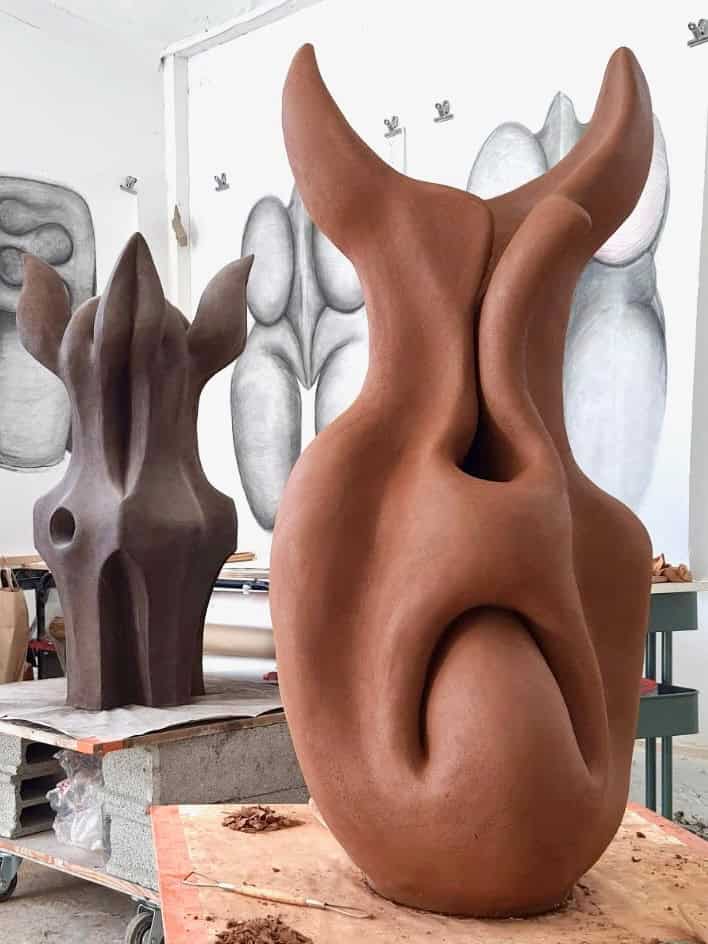
Performance and Place
Performance has recently entered her work as well. For instance, Brouhaha (et autres Tralalas) an immersive piece created with dancers, poets, and musicians in Arles, traced the soul’s passage through four seasons or cardinal directions. In particular, the performance was based loosely on the German fairytale of Frau Holle. As a result, the work became a moving ritual, gestural, vocal, and charged with transformation.
“It’s a sensory poem,” she says. “A way to step into metamorphosis.”
Meanwhile, Tiggesmeier divides her time between London and France. In Arles, she is converting a former garage into a hybrid space for studio work and public engagement.
“Arles gives me proximity to nature and a connected art community. London gives me openness and multiplicity. I need both.”
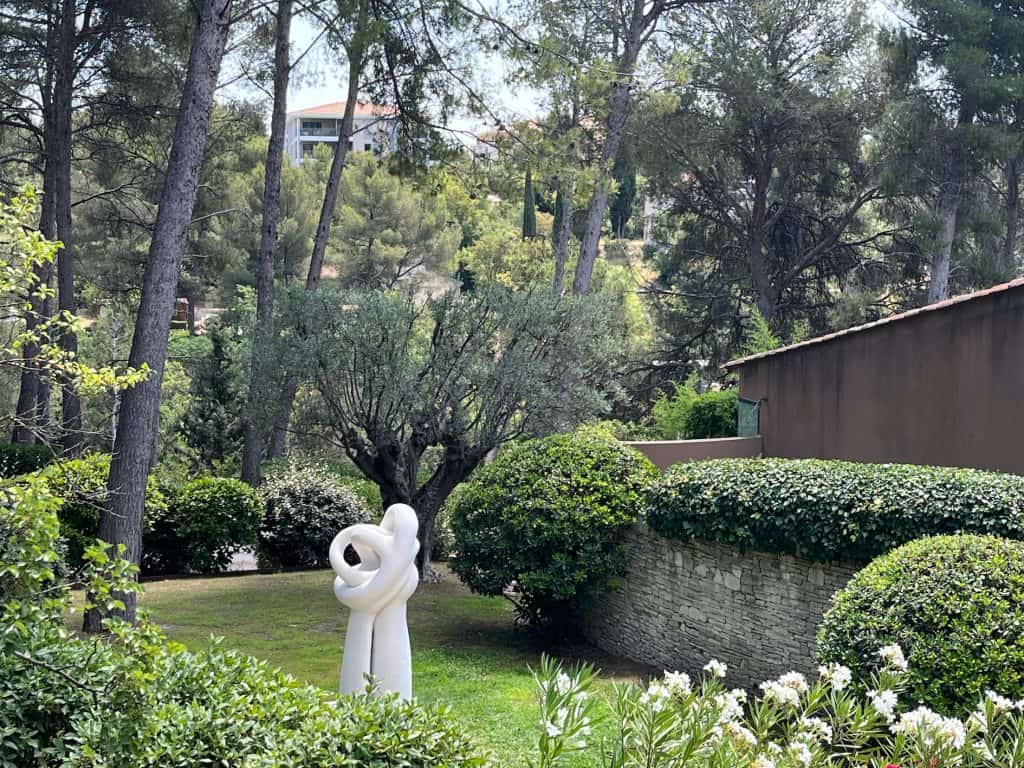
What’s next for Uta Tiggesmeier
The artist’s upcoming projects continue to blur boundaries between disciplines, cultures, and scales, exploring themes of female identity, ecofeminism, and transformation.
During the opening week of Les Rencontres de la Photographie in Arles, July 8-12, 2025, Tiggesmeier will take part in a round table with the artist and photographer Ophelia Jacarini at the Arènes d’Arles, Espace Luppé. The dialogue will bridge ancestral practices and new technologies, sculpture and performance, the body and its mythologies. Featuring a vocal intervention by soprano Jeanne Crousaud. Full programme via @onstage_photo.
Uta Tiggesmeier will for the first time participate in the international contemporary art festival A-part, which runs from July 3 to September 3 in the Alpilles-Provence, France. On Saturday, August 2 2025 at 6:30 p.m., her new large-size mural will be unveiled at the Silos Alpilles Céréales in Saint-Étienne-du-Grès. The work will be presented alongside pieces by Stanislas Blohorn, Marco Bollenbach, and Romain Trinquand. The murals are free to view and will be visible day and night from the D99 road. Access the full festival A-part program.
Looking ahead, a new collaboration is taking shape behind the scenes. Born from a recent artistic dialogue in Arles with a nationally recognized Kazakh sculptor. Their forthcoming residency in Kazakhstan (2025–2026) will explore shared approaches to earth-based materials and stone carving. It aims to deepen a cross-cultural exchange rooted in materiality and myth.
Read her full interview with Uta Tiggesmeier in the HUMAN issue.
Share this post
One day when I was barely two my mom let me push her out of her bedroom. She was curious so she ran outside the house so she could watch me through the window. I climbed up on a chair by her vanity and started putting on her makeup. I loved playing dress up as a kid. Putting on my mom's sequin tube tops and high heeled shoes and then putting on a dance show in the lobby or the restaurant of the hotel/residence we lived in. It was the best childhood ever. Dress-up, dancing, playing with barbies, and drawing were my favorite things to do. I have not changed one bit today. If I am creating I am happy.
Now I am in Paris for the second time in my life and I am having a ball playing with my partner in crime Julien Crouigneau. We founded IRK Magazine together in 2015 and we are proud to collaborate with some amazing artists, and influencers.
We are also a photography duo under the pseudonym French Cowboy. We love to tell stories and create poetic images that are impactful.
Read Next

